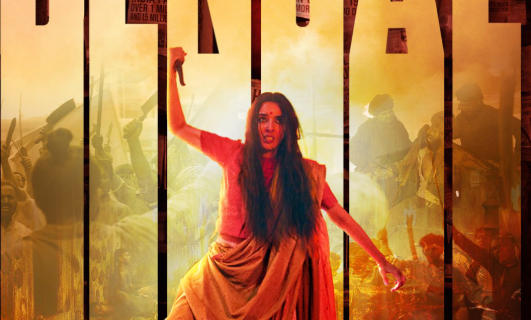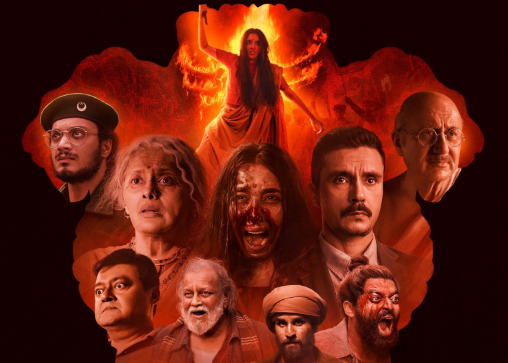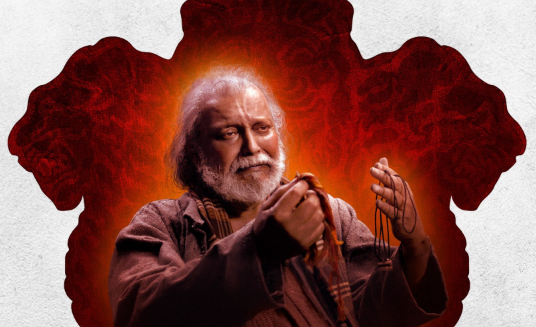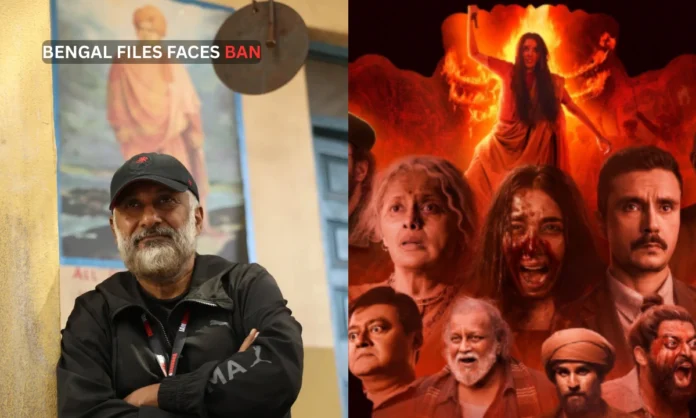Key Highlights:
- Theatre owners in West Bengal reportedly threatened by police against screening The Bengal Files
- Film producers plan legal action alleging unconstitutional interference by state authorities
- Major multiplex chains refuse exhibition amid alleged government pressure and threats
Opening Context of Cultural Censorship Crisis
The Bengali film industry confronts an unprecedented censorship crisis as Vivek Agnihotri‘s The Bengal Files encounters systematic screening blockades across West Bengal. This controversial film, depicting the tragic 1946 communal riots in Kolkata, remains absent from all cinema halls throughout the state despite its September 5 nationwide release. The controversial blocking represents what filmmakers describe as an “unofficial ban” orchestrated through intimidation tactics against theatre owners.
In memory of the victims of Direct Action Day (16th August 1946), I present to you the official trailer of #TheBengalFiles — the boldest film ever on the untold story of the Hindu genocide.
— Vivek Ranjan Agnihotri (@vivekagnihotri) August 16, 2025
In cinemas 5th September 2025.
Please bless us.🙏🏻
Watch on YouTube:… pic.twitter.com/pIFvyTGI3d
Theatre owners across West Bengal report receiving direct threats from police officials warning of “dire consequences” if they proceed with screenings. The systematic nature of these threats suggests coordinated efforts to prevent exhibition of The Bengal Files, with major multiplex chains joining independent cinema halls in refusing to screen the controversial film. This unprecedented scenario places the production alongside content banned in Islamic nations including UAE, Mauritius, Singapore, and Malaysia where The Bengal Files cannot be released.
Government Pressure Tactics Target Theatre Operations
Strategic Intimidation Campaign
Theatre owners throughout West Bengal face systematic pressure from state authorities regarding exhibitions. Police officials allegedly warn cinema operators of potential property damage if they proceed with screenings of The Bengal Files, creating an atmosphere of fear surrounding the film. These threats extend beyond individual theatre owners to include major multiplex chain officials who report similar intimidation tactics.
Producers document multiple instances where theatre owners express concerns about potential consequences. Vivek Agnihotri reveals that exhibitors ask, “What will we do if they barge in and destroy our property?” when discussing The Bengal Files screenings. This type of intimidation represents what filmmakers characterize as “hooliganism” by state authorities.
Just landed in Kolkata and learnt that the venue for the trailer launch of #TheBengalFiles is cancelled.
— Vivek Ranjan Agnihotri (@vivekagnihotri) August 15, 2025
Who wants to suppress our voice?
And why?
But I can’t be silenced. Because truth can’t be silenced.
ट्रेलर तो कोलकाता में ही लांच होगा।
Pl share this video and support… pic.twitter.com/xraD7w9sRb
Media Blackout Compounds Restrictions
Three major Kolkata newspapers refuse to publish listing advertisements for The Bengal Files, creating a comprehensive media blackout. This advertising boycott amplifies exhibition restrictions, ensuring limited public awareness about potential screenings even in areas where they might occur. The coordinated nature of these restrictions across different sectors suggests systematic efforts to suppress distribution of The Bengal Files throughout West Bengal.
Legal Action Framework Against Alleged Constitutional Violations
Writ Petition Strategy
Producers prepare comprehensive legal action challenging alleged constitutional violations by West Bengal authorities. Vivek Agnihotri describes the government’s actions regarding The Bengal Files as “illegal and unconstitutional,” with plans to file a writ petition depending on developments following the September 5 release date. The legal strategy focuses on challenging unofficial restrictions that circumvent formal censorship procedures.

The absence of written government orders complicates legal proceedings, as authorities employ what Agnihotri terms “a very smart tactic” of unofficial restrictions. This approach creates challenges for legal recourse while maintaining plausible deniability regarding formal censorship of The Bengal Files. The legal team must address these unofficial restrictions without explicit government documentation.
Presidential Intervention Appeals
Co-producer Pallavi Joshi submits personal appeals to President Droupadi Murmu seeking intervention for The Bengal Files release. These appeals highlight concerns about freedom of expression and cultural access, positioning the controversy within broader constitutional frameworks. The presidential appeal strategy demonstrates the severity of restrictions facing distribution across West Bengal.
Historical Context and Political Implications
1946 Riots Documentation
The Bengal Files explores the August 1946 communal riots in Kolkata, historically known as Direct Action Day, which resulted in 5,000 to 10,000 deaths and 15,000 wounded between August 16-19, 1946. This historical period remains controversial, with different interpretations from various political perspectives regarding responsibility and consequences. The production presents a particular narrative about these events that generates contemporary political tensions.

Official British military reports documented extensive violence during the 1946 riots, describing “mob riot” conditions across North Calcutta by 1100 hours on August 16. The historical documentation provides context for The Bengal Files narrative while highlighting ongoing political sensitivities surrounding this period.
Contemporary Political Ramifications
The controversy intersects with current West Bengal political dynamics, particularly regarding the Trinamool Congress government’s approach to historical narratives. Political opponents characterize the restrictions as suppression of artistic expression, while government supporters may view The Bengal Files as potentially inflammatory content requiring careful handling.
Box office performance data reveals the impact of these restrictions on commercial prospects. The film earned ₹1.63 crore on its opening day, significantly lower than The Kashmir Files’ ₹3.55 crore debut in 2022. The absence of West Bengal screenings substantially affects The Bengal Files revenue potential given the state’s significant Bengali-speaking population interested in the content.

Top 10 Highest Grossing Bengali Films of 2025 by Worldwide Gross
Final Assessment of Cultural Freedom Crisis
The screening crisis represents a complex intersection of artistic freedom, historical interpretation, and political control mechanisms. The systematic nature of restrictions against The Bengal Files exhibition suggests coordinated efforts to suppress particular historical narratives through unofficial channels. These tactics create precedents for future content restrictions while avoiding formal censorship procedures.

The legal challenges surrounding The Bengal Files may establish important precedents regarding informal government pressure on cultural industries. The outcome of pending writ petitions and presidential appeals will likely influence future approaches to controversial content management in West Bengal. The controversy ultimately highlights tensions between artistic expression and political sensitivities in contemporary India.
The broader implications extend beyond individual distribution to encompass fundamental questions about cultural access and historical discourse. This case demonstrates how unofficial restrictions can effectively suppress content while maintaining governmental plausible deniability regarding direct censorship actions.


